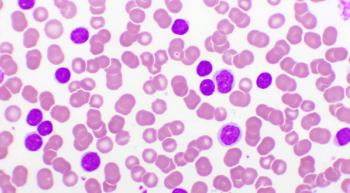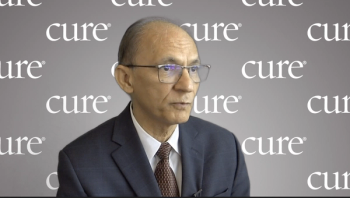
Patients with essential thrombocythemia faced an average delay of 26.5 months between their first high platelet count and diagnosis.

Patients with essential thrombocythemia faced an average delay of 26.5 months between their first high platelet count and diagnosis.

Ojjaara helps patients with myelofibrosis by reducing spleen size, easing symptoms, and improving anemia to boost independence from blood transfusions.

An expert highlights the impact of anemia in myelofibrosis and presented Ojjaara as a possible treatment to reduce transfusions and improve outcomes.

An early study of BGB-16673 for hard-to-treat leukemia found that side effects were manageable with no new safety concerns, per Dr. Lydia Scarfò.

Jaktinib significantly improved spleen volume reduction rates compared with hydroxyurea in intermediate- to high-risk myelofibrosis.

Patients with a subtype of lymphoma may be able to exclude radiotherapy if they respond to chemoimmunotherapy, although more follow-up is needed to assess potential long-term toxicities.

Findings from a phase 3 trial demonstrated that half of patients with FLT3-ITD-mutant acute myeloid leukemia and detectable minimal residual risk derived a relapse-free survival benefit with Xospata.

CAR-T cell therapies have not always been easy to access for patients with myeloma, though that is slowly changing, an expert explained.

Patients with inactive early-stage chronic lymphocytic leukemia may benefit from a wait-and-watch approach compared with immediate treatment with Imbruvica, findings from a phase 3 trial showed.

Jakafi led to improved symptom score and spleen volume reductions in patients with myelofibrosis, regardless of anemia or transfusion status, recent research showed.

Maintenance Darzalex, with or without Pomalyst was safe and efficacious in treating patients with relapsed myeloma who underwent salvage autologous hematopoietic stem cell transplant.

Iclusig plus reduced-intensity chemotherapy led to improved outcomes for patients with Philadelphia chromosome (Ph)–positive acute lymphoblastic leukemia, and should be the new standard of care, one expert said.

An ongoing trial is examining Calquence in older or frail patients with chronic lymphocytic leukemia — a group that is typically left out of clinical trials.